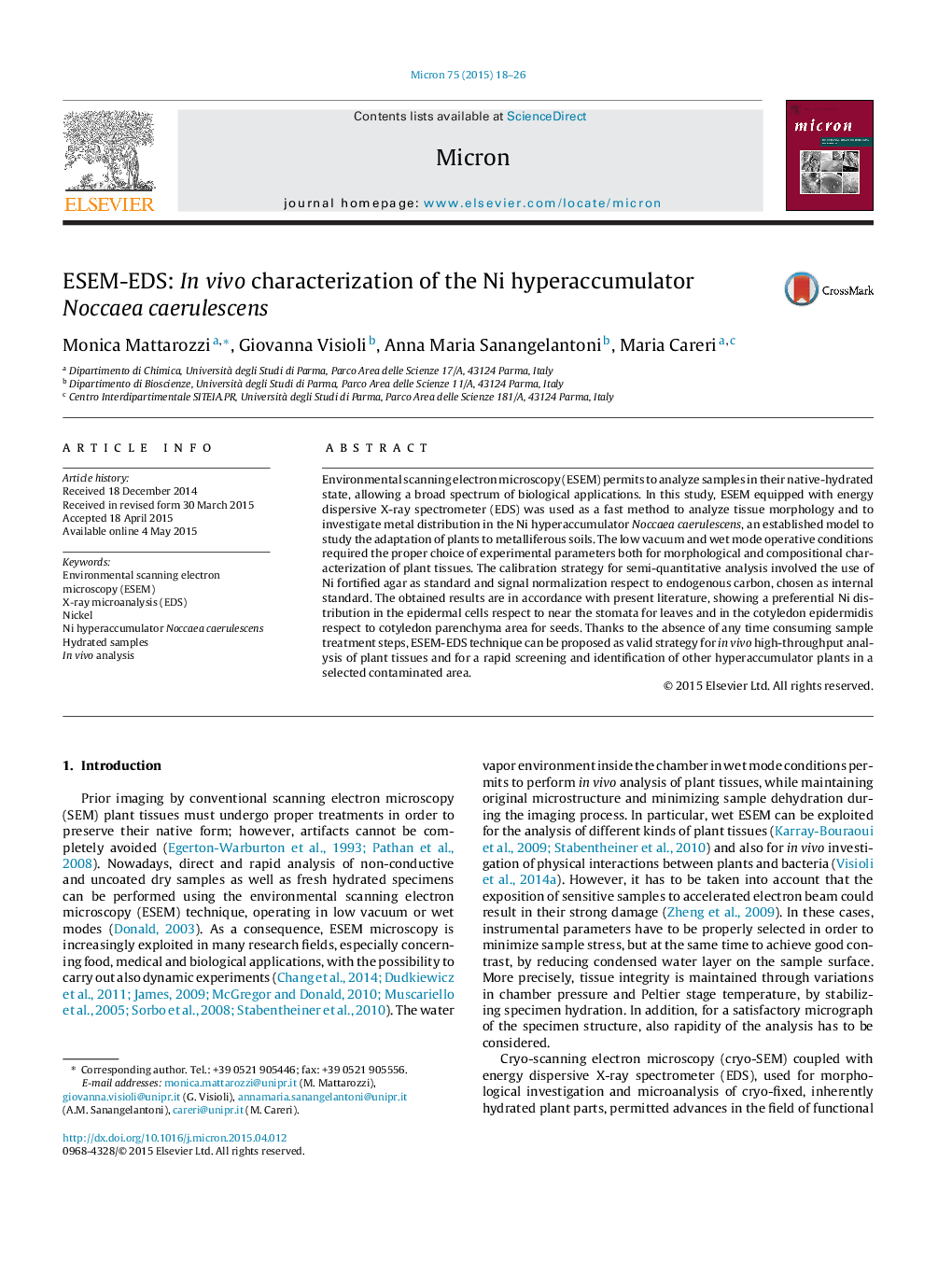| Article ID | Journal | Published Year | Pages | File Type |
|---|---|---|---|---|
| 1588861 | Micron | 2015 | 9 Pages |
•ESEM microscopy for fast in vivo characterization of plant tissues.•ESEM-EDS analysis of metal distribution in the Ni hyperaccumulator N. caerulescens.•ESEM-EDS reliable results both in low vacuum and in wet mode.•Sample treatment not required: toward high-throughput analysis of plant samples.
Environmental scanning electron microscopy (ESEM) permits to analyze samples in their native-hydrated state, allowing a broad spectrum of biological applications. In this study, ESEM equipped with energy dispersive X-ray spectrometer (EDS) was used as a fast method to analyze tissue morphology and to investigate metal distribution in the Ni hyperaccumulator Noccaea caerulescens, an established model to study the adaptation of plants to metalliferous soils. The low vacuum and wet mode operative conditions required the proper choice of experimental parameters both for morphological and compositional characterization of plant tissues. The calibration strategy for semi-quantitative analysis involved the use of Ni fortified agar as standard and signal normalization respect to endogenous carbon, chosen as internal standard. The obtained results are in accordance with present literature, showing a preferential Ni distribution in the epidermal cells respect to near the stomata for leaves and in the cotyledon epidermidis respect to cotyledon parenchyma area for seeds. Thanks to the absence of any time consuming sample treatment steps, ESEM-EDS technique can be proposed as valid strategy for in vivo high-throughput analysis of plant tissues and for a rapid screening and identification of other hyperaccumulator plants in a selected contaminated area.
